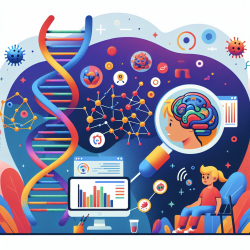Unlocking the Potential of DNA Sequences in Speech Therapy
In the realm of speech-language pathology, understanding the intricacies of neural development is paramount. A recent study titled A genome-integrated massively parallel reporter assay reveals DNA sequence determinants of cis-regulatory activity in neural cells provides groundbreaking insights that could transform how we approach speech therapy for children.
The Science Behind the Study
The research employs a novel technique called LV-MPRA (lentiviral-based massively parallel reporter assay) to explore how DNA sequences regulate gene expression in neural cells. By analyzing 2,600 sequences in glioblastoma and human neural progenitor cells, the study identifies key DNA features that influence regulatory activity. This method allows for precise measurement of gene expression, accounting for the effects of DNA sequence and chromatin environment.
Implications for Speech Therapy
Understanding how DNA sequences affect neural cell activity can have profound implications for speech therapy. Here are some potential applications:
- Personalized Therapy: By identifying specific DNA sequences that influence neural development, therapists can tailor interventions to individual genetic profiles, enhancing the effectiveness of therapy.
- Early Intervention: Recognizing DNA markers associated with speech and language disorders could lead to earlier diagnosis and intervention, improving long-term outcomes for children.
- Targeted Research: This study encourages further research into the genetic basis of speech and language development, paving the way for innovative therapeutic techniques.
Encouraging Further Research
While this study offers valuable insights, it also highlights the need for continued research. Practitioners are encouraged to explore the genetic factors influencing speech development further. By integrating these findings into practice, we can enhance our understanding and treatment of speech and language disorders.
To read the original research paper, please follow this link: A genome-integrated massively parallel reporter assay reveals DNA sequence determinants of cis-regulatory activity in neural cells.
Conclusion
Incorporating genetic insights into speech therapy can revolutionize how we approach treatment for children. By leveraging data-driven decisions and focusing on the genetic underpinnings of neural development, we can create more effective and personalized therapeutic strategies. As we continue to explore the intersection of genetics and speech therapy, the potential for improved outcomes for children is immense.










